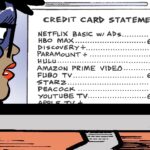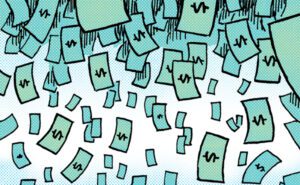 “Data-Driven Thinking” is written by members of the media community and contains fresh ideas on the digital revolution in media.
“Data-Driven Thinking” is written by members of the media community and contains fresh ideas on the digital revolution in media.
Today’s column is written by Phil Schraeder, president and chief operating officer at GumGum.
Marketers like Marc Pritchard, P&G’s global brand-building officer, are beginning to throw down the gauntlet on viewability.
Few publishers have sat on their hands with viewability. Most have engaged auditing and measurement companies to assess the true viewability rates of their sites, and they also have invested in optimizing page layouts to offer as many viewable units as possible.
Most notably, they have created or partnered with tech companies that created bigger and flashier – and thus unavoidable – ads on their sites. Sometimes those takeover ads are triggered at the wrong moment, disrupting the user experience and requiring the consumer to find the X that shuts them. Or they follow the consumer around, which on its surface seems really cool, but they often slow down the page navigation and frustrate users.
Despite all of this, viewability rates haven’t come close to the 100% many want. In fact, they hover around 53.5%, according to Moat. That’s not enough to meet the standards of folks like Marc Pritchard.
“Viewability is a standard, to be sure, but it has become more of a negotiation,” Rob Rasko, CEO of publisher consultancy The 614 Group, told me recently. “Publishers have spent the past few years redesigning their sites and partnering with measurement companies, and there’s not a lot more they can do. If marketers say that they’ll only pay for viewable impressions, and that for all intents and purposes nonviewable impressions simply don’t exist, that’s fine.
“But the question becomes: How much more are you willing to pay for viewable impressions? This is the difficult question that’s not being asked of marketers.”
To Rasko, when marketers insist they’ll only pay for viewable ads, it essentially means that up to 50% of a publisher’s inventory can’t be monetized. And that, in turn, means there are fewer impressions available, creating a scarcity that drives up costs.
But even if marketers like Pritchard were willing to pay a 50% premium for viewable impressions, publishers face big risks to their bottom line. That increase won’t make up for the 50% loss of inventory that’s no longer able to be monetized.
I add all of these things together and I definitely see a market that’s far from optimal. What do we do?
It seems imperative that we come up with ads that are inherently viewable rather than intrusively viewable. And by that I propose a single test: Can we create scenarios that allow advertisers to present consumers with a message that piques their interests without being intrusive?
The first step to being less intrusive is to understand how people consume content. When people type in the URL of, say, The New York Times, it’s because they intend to read content, and a home page takeover may not feel as intrusive. We all understand that publications need advertising revenue, and such strategies, in that time and place, feel appropriate.
But if we’re on Facebook or Twitter and a friend recommends an article, a full-page takeover probably feels more intrusive for some readers. It gets in the way of what they’re doing, which is having conversations and sharing with friends or family. Put another way: New and innovative ad formats are great, but they work best in the right context.
The industry needs nonintrusive ads appearing in the right context and targeting the right audience if we are to make advertising work for both the brand and consumer.
Follow GumGum (@GumGum) and AdExchanger (@adexchanger) on Twitter.













